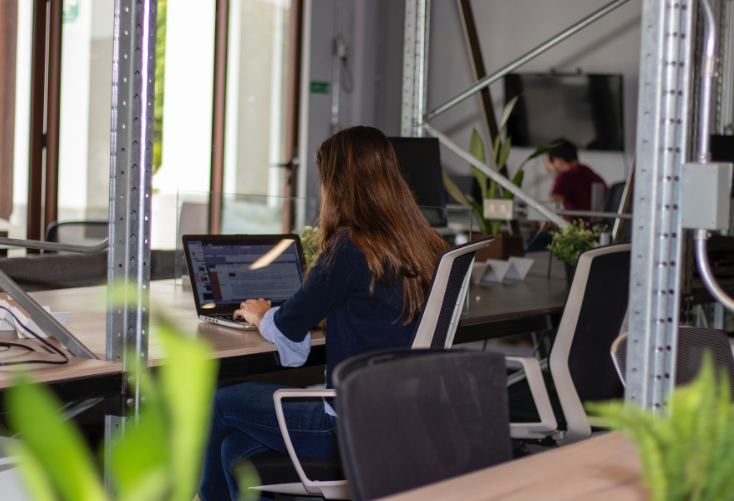Hand selected flexible workspace news from the most reliable sources to keep you ahead of the pack. We find all the latest news, so you don’t have to. Morning and afternoon updates. Stay in the know.
Here’s what you need to know today:
- The Pandemic Has Transformed Urban Design NEW
- Emerging Commercial Real Estate Trends For 2021 NEW
- Why Wellness In The Workplace Is Crucial NEW
- How 2020 Is Impacting Startups Founded By Women
- Amazon Web Services CEO Predicts A Hybrid Future Of Work
- How Hybrid Work Policies Help Everyone Involved
The Pandemic Has Transformed Urban Design
Urban planners are being faced with the daunting task of reevaluating public spaces to make them future-proof for a post-pandemic society.
The pandemic lockdowns have highlighted the importance of outdoor spaces for our physical and mental wellbeing, which has increasingly become a priority for individuals and organizations over the course of the year.
This includes our changing preferences in how and where we work. A Deloitte study found that 61% of office workers want to work from home more now than they did prior to the pandemic.
That means planners need to create urban environments that nurture this major shift in the workforce.
Knowing this, we can expect a new emergence of health-conscious spaces that feature touchless technology, designs that support distancing and more to prevent virus transmission.
For example, architecture firm Astudio’s Ebury Bridge Estate project in London provides residents a place to live safely during the pandemic. It features garden squares and virtual reality walkthroughs to prevent non-essential workers from visiting the site.
Data will be crucial in making these changes to have an understanding of population flows and density levels across cities.

Emerging Commercial Real Estate Trends For 2021
The industry that may have been hit the hardest by the ongoing pandemic is arguably commercial real estate. However, as the promise of a vaccine becomes more realistic, 2021 will see new trends emerge.
One of those trends will be the slow comeback of coworking spaces. Even prior to the pandemic, the industry was faced with challenges due to WeWork’s failed IPO attempt, as well as an overall slowdown of growth.
However, a study from Colliers International predicts that the number of flexible offices could double or triple over the next five years as employees continue to demand to work from anywhere.
Along with this increase in flexible offices is the desire for short-term leases. Office tenants are now seeking leases that are shorter than traditional 10- to 15-year leases.
Additionally, sublease space is expected to continue increasing. Office vacancies have spiked over the last several months as companies shift to remote working for the time being. Now, organizations are reevaluating the amount of space they will need in the future, adding extra pressure on office rents.
Among the many losses that have hindered the commercial real estate industry over the past year, there is one winner: warehouses. As e-commerce continues to explode, companies such as Amazon and others need more delivery points to continue operating at their current frequency.

Why Wellness In The Workplace Is Crucial
Health and wellness has always been seen as an essential part of a well-oiled workforce, but now more than ever, companies need to make it a top priority.
According to Katrina Larkin, co-founder of flexible workspace Fora, the key to a healthy work culture is ensuring employees have a good balance between work life and home life.
“Wellness is a leading component of the workplace evolution which Fora is helping to forge,” said Larkin. “We know that thriving businesses are built by thriving people.”
This means curating design that nurtures wellness, accommodates the varying needs of employees and gives them the power to choose how and when they work.
“It’s all about having the right mix of desirable spaces that can support what people do during the working day,” said Felicity Rocke, head of design at Fora.
Fora picks buildings to occupy based on its amenities, alternative workspaces, natural lighting and external spaces. These are all essential because buildings that, for instance, have harsh lighting can hinder an employee’s productivity levels.
In short, members of Fora do not have to sweat the small stuff. That allows employers to focus on more internal wellness programs that support the mental health of workers, such as providing resources and access to professionals for those who may be struggling.
The company honed in on their abilities by hosting a wellness festival in September that featured events covering topics from nutrition, sleep, racism and more within the wellness industry.

How 2020 Is Impacting Startups Founded By Women
Over the last year, Black customers and employees began sharing their experiences with discomfort they felt in the pastel-laden women-oriented coworking community the Wing.
In March, The New York Times published an article that described what employees referred to as a “toxic culture” at the Wing. This included complaints about pay, scheduling and managers’ failure to properly handle racist incidents.
After the pandemic forced the company to close its offices, followed closely by the murder of George Floyd that led to the resurgence of the Black Lives Matter movement, the future of the company began to look murky.
In June, Gelman stepped down as CEO, stating she spent time valuing “growth over culture at the expense of women of color feeling empowered.”
“There are very few women leaders who rise to the level where they get press and attention, and at some point, they’re all disappearing,” said Sara Mauskopf, the cofounder and CEO of childcare platform Winnie. “What the heck is going on? And why is this only happening to women?”
The pandemic has had a disproportionate impact on women. In fact, according to a report from data firm PitchBook, VC funding for women-founded companies fell to $434 million in October, its lowest level in three years.
While male leaders are often seen as assertive, strong and decisive, often graced with more leniency when accused of sexist or racist behavior, women have less room for error.
The transparency that is coming to light about companies’ problematic culture is crucial to making real social change, but when will male business leaders be held to the same standards?

Amazon Web Services CEO Predicts A Hybrid Future Of Work
Amazon Web Services (AWS) CEO Andy Jassy predicts that the future of work will include “hot offices” that allow employees to reserve a desk when they come into the workplace.
Jassy, who is second in command to Jeff Bezos, said he anticipates employees to mostly work remotely in the future and only use offices when necessary depending on their job role.
This coincides with a sentiment shared by other tech founders, such as Microsoft’s Bill Gates, who are anticipating companies to adopt a hybrid work arrangement in the future.
“My suspicion is that a lot of these office buildings will start to evolve from being optimized for individual offices or cube space to being hot offices where you decide which day you’re going to come in and then you reserve a desk,” said Jassy.
Jassy added that one of the biggest challenges of a distributed workforce are daily meetings since it can be difficult to have a true brainstorming session over video chat, especially when it comes to creating new products.
Amazon, along with other tech firms like Google and Facebook, told employees that they can work remotely until at least June 2021. However, this work policy is expected to be implemented on a more long-term basis.

How Hybrid Work Policies Help Everyone Involved
While remote working was once viewed as a temporary solution to keeping employees safe during the pandemic, experts believe that it will become a necessity for the future of work.
Many major tech companies have already made the commitment to more flexible work policies in the future, such as Twitter who announced it would allow employees to work from home permanently.
It’s understandable why companies are making this shift — they can enjoy lower expenses while allowing employees to attain a better work-life balance.
In fact, a YouGov survey revealed at least 58% of employees want to continue working from home to cut down on lengthy commutes.
Still, the survey also found that 39% never want to work from home after the pandemic. This is likely due to workers lacking the space or home office equipment to be productive, particularly among younger workers who share their space with roommates. Spotty Wi-Fi and kitchen counters don’t exactly equate to an inspiring environment.
Additionally, many workers have reported that they are unable to switch off at the end of the work day, which can negatively impact mental and physical health.
That is why the hybrid work strategy could be the ideal solution for all parties involved. Employees can come into the office some days, and work from home on other days. This allows businesses to still downsize their real estate footprint and cut costs, while providing employees with a better sense of community and a workspace to come into away from the distractions of home.



 Dr. Gleb Tsipursky – The Office Whisperer
Dr. Gleb Tsipursky – The Office Whisperer Nirit Cohen – WorkFutures
Nirit Cohen – WorkFutures Angela Howard – Culture Expert
Angela Howard – Culture Expert Drew Jones – Design & Innovation
Drew Jones – Design & Innovation Jonathan Price – CRE & Flex Expert
Jonathan Price – CRE & Flex Expert














